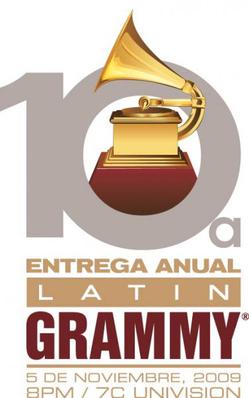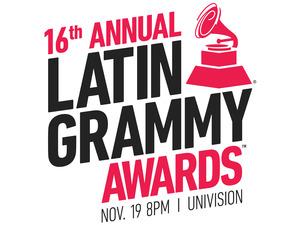
Ángel Agustín María Carlos Fausto Mariano Alfonso del Sagrado Corazón de Jesús Lara y Aguirre del Pino, known as Agustín Lara, was a Mexican composer and performer of songs and boleros. He is recognized as one of the most popular songwriters of his era. His work was widely appreciated not only in Mexico but also in Central and South America, the Caribbean and Spain. After his death, he has also been recognized in the United States, Italy and Japan.

Graciela Naranjo was a Venezuelan singer and actress. A radio, cinema and television pioneer in her homeland, she made her professional debut as a bolero singer in 1931. From the thirties onward her fame as a singer grew, she appeared in films and had her own TV show in an incredibly long career that extended from 1931 through 2000. She is the mother of Alberto Naranjo, a Venezuelan musician.
Orquesta Riverside was a highly successful Cuban big band that was amongst the most popular ensembles of the 1940s and 1950s. Founded in 1938, it was originally directed by local musician Enrique González Mantici until 1945. Other directors were Antonio Sosa (1945–47), Pedro Vila (1947–57), Adolfo Guzmán (1957–62), Argelio González and Nelson Arocha.

Rodrigo Alvarez de la Cadena is a Mexican singer, performer, songwriter, radio host and musician. He is best known for his performances with a variety of worldwide artists and performers. He is also the host of a live radio show in which he performs and introduces audiences to his music.

Nuevamente... El Bolero is the first solo album by artist Rodrigo de la Cadena. It was first released in 2005. Out of the 12 songs released on this album, there were over 30 demos of different compositions by Agustín Lara, Luis Demetrio, Armando Manzanero, etc. Sessions took place at Discos Orfeon.
Rodrigo Prats was a Cuban composer, arranger, violinist, pianist and orchestral director.

The 10th Annual Latin Grammy Awards took place on Thursday, November 5, 2009, at the Mandalay Bay Events Center in Las Vegas, Nevada. This was the second time the show took place in Las Vegas. Juan Gabriel was honored as the Latin Recording Academy Person of the Year on November 4, the day prior to the telecast. Calle 13 were the big winners, winning five awards including Album of the Year. 2009 marked the tenth anniversary of the Latin Grammy Awards.
Carlos Barbería began his career in Havana, Cuba in the 1950s playing night clubs such as Monmatre and Tropicana. An early album titled "Carlos Barbería and his Orquesta "Kubavana" featured singer Yvette De La Fuente who performed with the band during the mid-1950s in Havana. "Bésame Mucho", Consuelo Velazquez' classic bolero, sung and recorded internationally by many artists and which was later recorded by the Beatles and the 2008 recording by Luis Miguel of another old classic "La Gloria Eres Tu" by Jose Antonio Mendez, were two of the songs on the album. During the 1950s Barberia also directed a smaller ensemble or combo, which featured Regino Tellechea and also Ivette de la Fuente as singers. His jazz band in Havana also featured famous sonero/bolerista singers like Raúl Planas, Juan Antonio Jo "El Fantasmita" and sometimes Rudy Calzado and Carlos Embale. In his day Barberia was very talented and a great host. In Havana he met the famous Ava Gardner. That same night the actress invited him out; she loved the way he conducted his orchestra, the way he would wear the "habanera", a typical Cuban shirt. Barberia with his band and combo steadily recorded for various Cuban labels. He was featured in Cuba's foremost TV and radio stations as well as featured in Havana's top night clubs and theatres. During the 1970s and 1980s Barbería led a Cuban big band, Orquesta Kubavana, in New York. Artists who performed with him included Paquito D'Rivera, Willy 'El Baby' Rodríguez, and Meñique. as well as a featured performance by Yvette De La Fuente.

María Rodrigo was a Spanish pianist and composer. She was the daughter of Pantaléon Rodrigo, and studied music at the Madrid Conservatorium under José Tragó for piano, Valentín Arín for harmony and Emilio Serrano for composition. Maria was the first woman to have her opera performed in Spain. Her sister Mercedes Rodrigo was equally intelligent, being the first woman from Spain to obtain a degree in psychology from the Rousseau Institute in Geneva. The two left Spain for Switzerland during the Spanish Civil War, moved in 1939 to Bogota, Colombia, at the invitation of rector Agustín Nieto Caballero, and in 1950 to Puerto Rico at the invitation of José María García Madrid. With Pablo Casals, Rodrigo founded the Puerto Rico Conservatory of Music. She died in Puerto Rico in 1967. Maria was one of the few composers that addressed the composition of zarzuelas, a genre of Spanish music.

The 14th Annual Latin Grammy Awards was held on Thursday, November 21, 2013, at the Mandalay Bay Events Center in Las Vegas. This was the sixth time that Latin Grammys has been held at this location. The main telecast was broadcast on Univision at 8:00 PM EST.
Raimunda Paula Peña Álvarez, better known as Paulina Álvarez, was a renowned Cuban singer of danzonetes. She became the leading exponent of the genre during the 1930s, being nicknamed La Emperatriz del Danzonete. Her greatest hit was the song "Rompiendo la rutina", the first danzonete, composed by Aniceto Díaz in 1929. In 1960 she recorded her only LP record.
Carmen Sánchez Levi, known as Carmela Rey, was a Mexican singer and actress.

The 16th Annual Latin Grammy Awards were held on November 19, 2015 at the MGM Grand Garden Arena in Paradise. This is the second time that Latin Grammys will be held at this location, will be broadcast live on the Univision Network from 8–11 p.m. ET/PT.
Gonzalo Curiel Barba was a Mexican film composer. He was active during the Golden Age of Mexican cinema.
Eva Garza was a Mexican-American singer and film actress who acquired international recognition in the 1940s and 1950s during the Golden Age of Mexican cinema. She collaborated on live radio shows and films with some of the leading performers of her time, including Mexico's Agustín Lara. She was nicknamed "Sweetheart of the Americas".
Puchito Records was Cuba's second independent record label. It was founded in 1954 during the mambo and cha-cha-chá explosion of the 1950s. Many of its recordings, produced by its founder Jesús Gorís (1921–2006), became instant hits. Cuban music styles represented in its discography include danzón, güajira, son cubano, son montuno, cha-cha-chá, guaracha, guaguancó, Cuban bolero, Cuban rumba, mambo, new flamenco, and Zarzuela. Other styles include farruca, merengue (Dominican), Ranchera (Mexican), nueva canción (Mexican) ... styles from Spain include cuplé, pasodoble, and flamenco. The ensembles range from studio orchestras to jazz combos to big bands to charangas.

Salsa Big Band is the fourth studio album by Rubén Blades and Roberto Delgado & Orquesta, released on 29 April 2017 by Rubén Blades Productions. After the release of Son de Panamá in 2015, also recorded with Delgado & Orquesta, Blades decided to record another album with them, on which included eleven songs. He had previously recorded nine on the songs, and two were covers of songs written by Luis Demetrio and Rene Touzet. Delgado was the producer for the álbum. Blades' principal inspiration for the album was his admiration for the work of Puerto Ricans performers such as Tito Puente, Tito Rodríguez and Willie Rosario, and the big band sounds of the 1950's.
Néstor Mesta Cháyres was an acclaimed tenor in Mexico and a noted interpreter of Spanish songs, boleros and Mexican romantic music on the international concert stage. He was widely commended for his artistic renditions of the works of Agustín Lara and María Grever and was nicknamed "El Gitano de México".

Juan Nepomuceno Arvizu Santelices, was an acclaimed lyric tenor in Mexico and a noted interpreter of the Latin American bolero and tango on the international concert stage, on the radio and in film. He was widely noted for his interpretations of the works of Agustin Lara and María Grever and was nicknamed "The Tenor With the Silken Voice".
René Lorente is a Cuban-American musician and composer, recognized for having been a member of the Orquesta Aragón, for his solo career and for his collaboration with musicians such as Senén Suárez, Enrique Jorrín, Meme Solís, Cachao López, Chucho Valdés and Albita Rodríguez, among others.










